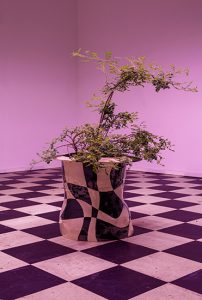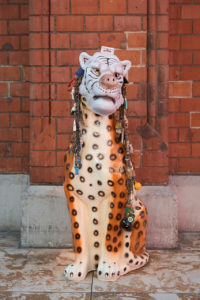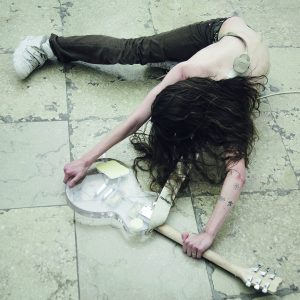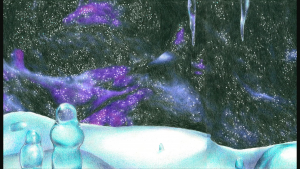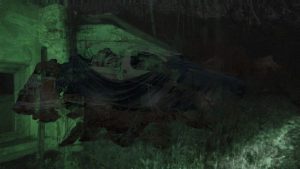“COVID-19 ARRIVED DURING A HUGE RESURGENCE OF AMBIENT MUSIC – PENSIVE, NOSTALGIC, MELANCHOLIC, ALONE MUSIC… NOW IN QUARANTINE, REALITY HAS CAUGHT UP WITH THE SOUNDTRACK WE HAVE BEEN WRITING FOR IT.”
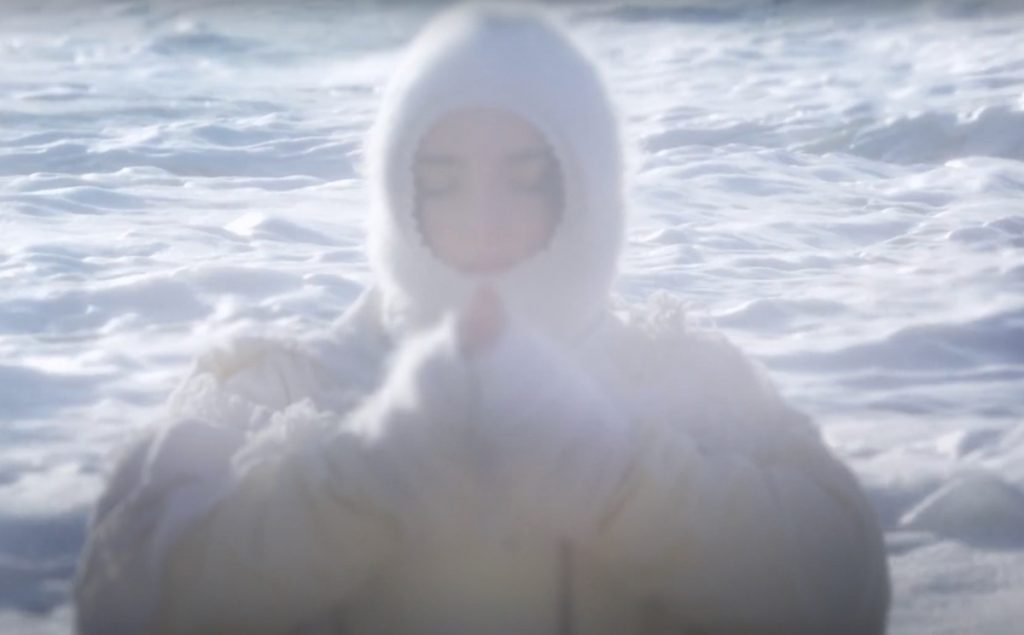
So goes the tweet from video director and music producer Lil Internet’s Twitter on March 21, as lockdowns began globally. A trend for ambience in art and music—work that emphasises atmospherics and becoming ‘background’—has been in the air for some years now. Reflecting on several 2013 New York summer exhibitions, including MoMA’s Soundings and James Turrell at the Guggenheim, sound art theorist Seth Kim-Cohen wrote then on an increasing interest from contemporary art in the concept with his essay Against Ambience. Several years later, Pan Daijing described last year’s experimental opera performance commission Tissues for Tate Modern with the following comment in the catalogue text: “It’s like you fall into a void, you’re just floating. The work becomes an ambience.” This phrase in turn brings to mind another in 2013 by philosopher Timothy Morton, on the intangible singing of My Bloody Valentine’s Bilinda Butcher. He notes that she “places her voice on either side of the stereo image, at extreme right and left… It becomes ambient (the Latin ambo means “on both sides”). We hardly hear it.” Over the last decade, ambience has become a cultural zeitgeist during social and political moments of crisis, change and digital acceleration.
Ambience itself is hard to define. It can’t be reduced to a single genre and it is too full of all sorts of associations to serve the purpose of being a precise term or concept. It can be an atmosphere, a style, or a buzzword, and it is too large of an idea to get a full sense of its scale. But this is exactly what makes it interesting in the present: it’s quite like what Timothy Morton calls ‘hyperobjects’, or phenomena that are too big for us to even comprehend as things, such as climate change. We seek comfort in the aesthetic of ambience, but we are also daunted by it. Ambience is a perfect aesthetic metaphor for living in the age of problems too big to scale.
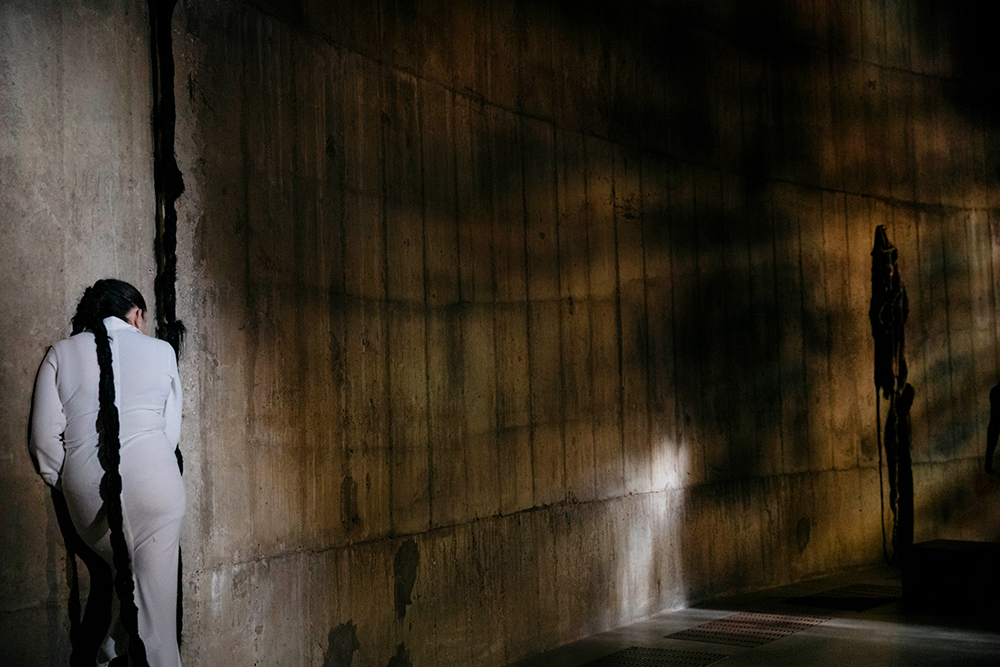
Brian Eno coined the term ‘ambient’ as a musical genre in the 1970s with an anecdote of being sick in bed, unable to get up and adjust the volume of a record. He in turn became content with the music at a low volume such that it was no longer an in-focus sound object to actively listen to, but rather a blurring of the distinction between sonic foreground and background. Ambient music is often thought of as a tool in this regard, as indiscreet moods to switch off to in the face of anxiety. The current moment sees us confront hyperobjects like the coronavirus, climate change and the persistence of a capitalist politics that isn’t working for us. With this in mind, ambience can be described most usefully not in terms of passivity, but intangibility. Ambience is a prevailing aesthetic in a digitally-mediated age of intangible things beyond human scale.
The term spans more than just a genre or stylistic trend, though it’s true that certain strains of ambient music have enjoyed renewed interest lately, and many artists toy with the concept today in a way that’s quite distinct from past iterations. PAN’s 2017 compilation mono no aware was a solidifying moment for this current. One contributor to this release, the London-based French producer Malibu has for years cultivated a consistent sound world influential to those under the umbrella of ambience in internet-native music. Working under the DJ Lostboi alias, the artist often incorporates and appropriates the culturally-loaded motifs of early-2000s commercial trance music, melding these with orchestral strings rich in cinematic semiotics. As the host of United in Flames—an online radio show interested in “emotional complexity” in music—Malibu’s ambience is best described not as passive backgrounds, but rather as sound rich in associative meaning. Her radio show has been a gravitational point for a new aesthetic of ambience online that includes ssaliva, 7038634357, Quit Life, and Torus, among others. Take for instance DJ Lostboi’s contribution for the November 2019 episode of United in Flames, where rather than a mix of various tracks, the artist presents an hour-long new composition entirely built around a repeating phrase from the 2002 track ‘Take Me Away’ by 4 Strings. A slowed performance of the Top 40 trance hit’s main synth hook gently glides in and out of wavelike, reverb-soaked percussive crashes. The extended duration and looping of the piece brings to mind the ‘60s minimalism of the likes of Steve Reich, or Elaine Radigue’s droning experiments, although drenched in the postmodern pop culture of the internet age.
Ambient aesthetics have found their way into mainstream charts too, with popular music academic Robin James commenting in 2017 on a tendency in pop towards the term ‘chill’. The link to ambience here is not one of minimalism in the old sense of Eno’s ‘ambient music’, but rather the emphasis on an overarching mood, or on becoming ‘background’. James discusses the ubiquitous success of musicians such as The Weeknd—whose recent album has sat atop charts for much of the coronavirus pandemic—noting how streaming platform algorithms play a role in smoothing musical listening into an edgeless backdrop. In James’ analysis this notion of chill is an atmosphere that intersects with the medicated mood of contemporary culture’s saturation with the anti-anxiety drug Xanax. She comments, “Moderation, specifically, moderating risk, is the thread that runs through streaming’s use of statistical normalization, pop’s toned-down soars and drops, and the popularity of anti-anxiety medicine.” Specifically, digital platforms play a big role in the prevalence of this kind of chill ambience in an overworked age where mindfulness has become a pervasive phenomenon. Spotify’s culture of playlists tends to categorise tracks not according to genre or artist, but rather what they describe also as ‘moods’. Where the ambient is traditionally understood as a blurring of foreground and background, of diminishing distinctions, likewise digital platforms are eliminating the delineations of genre itself in place of a set of ambient emotional settings.

On YouTube, the algorithm has for many music fans in recent years been a site for uncovering out-of-print 1980s ambient (this time in the direct lineage of Eno’s coined genre) and New Age records such as those of Hiroshi Yoshimura. This sits somewhere in line with a trend in music culture for unplaced nostalgia that has been described notably with Mark Fisher’s use of the concept ‘hauntology’. In his book Ghosts of My Life, Fisher explains two key aspects of the idea using the terms ‘no longer’ and ‘not yet’, drawn from philosopher Martin Hägglund. The first of these refers to:
…that which is (in actuality is) no longer, but which remains effective as a virtuality (the traumatic ‘compulsion to repeat’, a fatal pattern). The second sense of hauntology refers to that which (in actuality) has not yet happened, but which is already effective in the virtual (an attractor, an anticipation shaping current behaviour).
The nostalgic melancholia and aesthetic of yearning in the United in Flames radio show, along with its associated artists, could be understood as hauntological in this sense of ‘no longer’. In turn, it’s perhaps not too great a stretch to suggest that a boom among YouTubers uploading Japanese ambient, city pop and new wave music speaks to a ‘not yet’ hauntological fetishism for the cyberpunk imaginary of 1980s Japan, in a similar way that vaporwave did. One notable example is a viral upload of background music produced by Haruomi Hosono for MUJI department stores in 1984. These tracks were uploaded with an unrelated illustration becoming something of an imagined album cover for a record that was never released; a spectral presence from the past that has resonance with our present day sense of resignation. The upload has developed its own lore through YouTube comments. In April 2020, as the post-coronavirus political economy is more or less rewritten through previously unthinkable state interventions, the video’s pinned top comment is: “this is the music that’s gonna play when capitalism finally ends.”
Kim-Cohen’s criticism of ambience in contemporary art is a charge against the uncritical, and follows on from earlier writing in which the writer examined why sound and music did not have a 20th century ‘conceptual turn’ in quite the same way the visual arts did. He resolves that a new interest among institutions in sound is not due to any move towards criticality and conceptualism in readings of the medium, but rather due to a novel desire for the experiential types of works of which Kim-Cohen was himself wary. He comments in Against Ambience:
Perhaps the embrace of sound as a viable medium in the art world is not simply patronizing… Perhaps what’s happening is that the art world is turning away from what I will call “linguistic conceptualism,” engaged with language and terminological sites, and turning towards an “ambient conceptualism,” the kind that discards “hard” materiality, in favour of the “soft” materiality of a-signifying phenomena such as, light, space, and time.

The Instagram-friendly ambient light works critically examined by Kim-Cohen in 2013 have continued to the present day—just several months ago the Tate Modern hosted a major show by Olafur Eliasson, one such artist discussed by Kim-Cohen. However the recent crisis of public space due to coronavirus—no doubt set to have lasting effects on the way in which we gather—might just have nailed a stake through the heart of the ‘experience economy’ that fed this desire for uncritical phenomenological spectacles. Regardless, it doesn’t spell the end of the pervasive anxiety in confronting large-scale phenomena, such as global warming, that cause us to try to tune out with such experiential ambience in the first place. Rather, the pandemic adds yet another hyperobject to a growing list on our minds. Once the lockdown ends, how do we face the coming economic uncertainty, or the acceleration of climate change? These issues challenge the anthropocentric notions of modernity: our flawed sense of mastery over nature, our individual will, our ability to control and rationalise. Ambience provides an aesthetic comfort for this, a musical object that we can enjoy in soft focus and out of our control.**
United in Flames hosted by Malibu airs monthly on n10.as radio.

